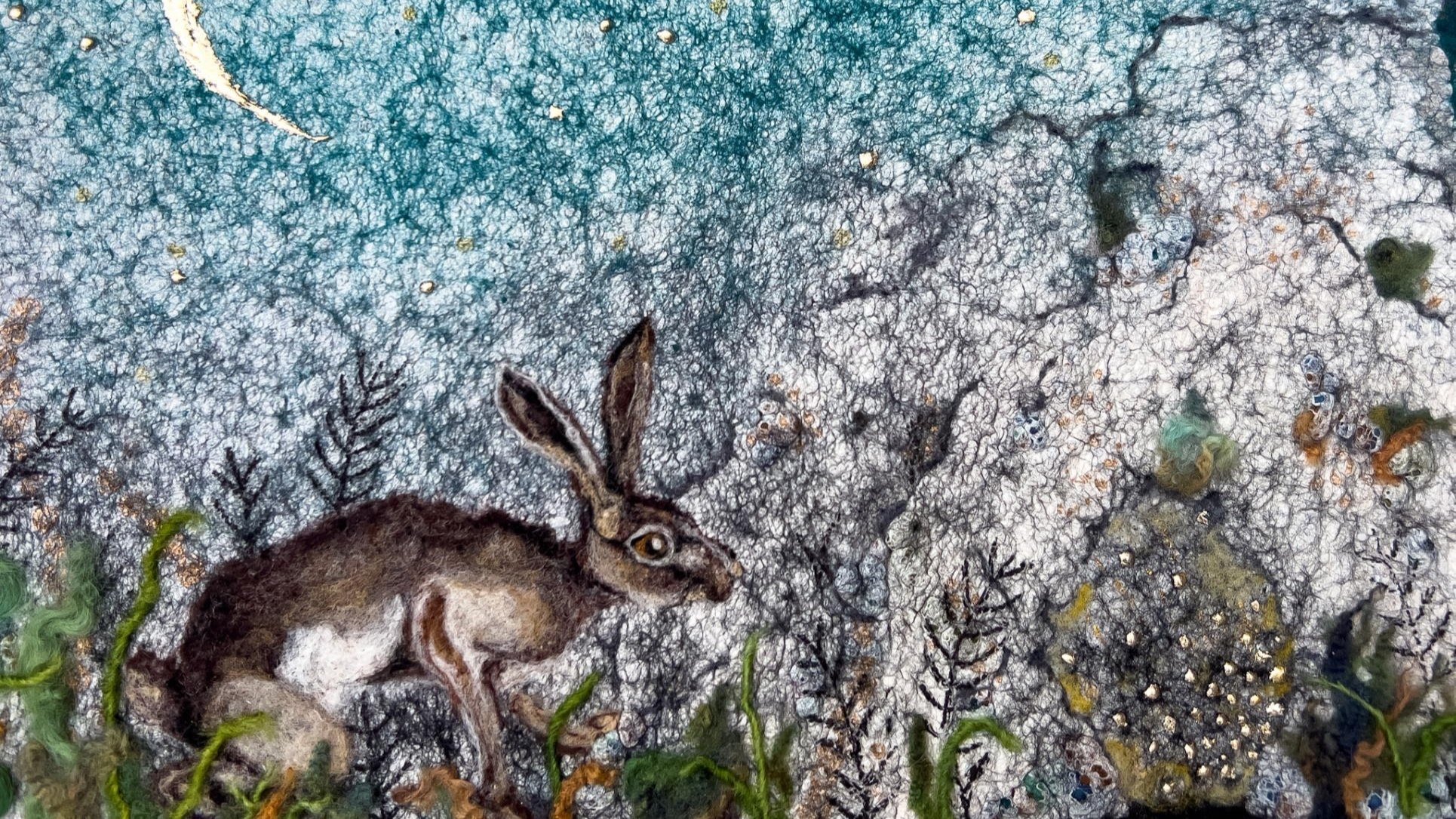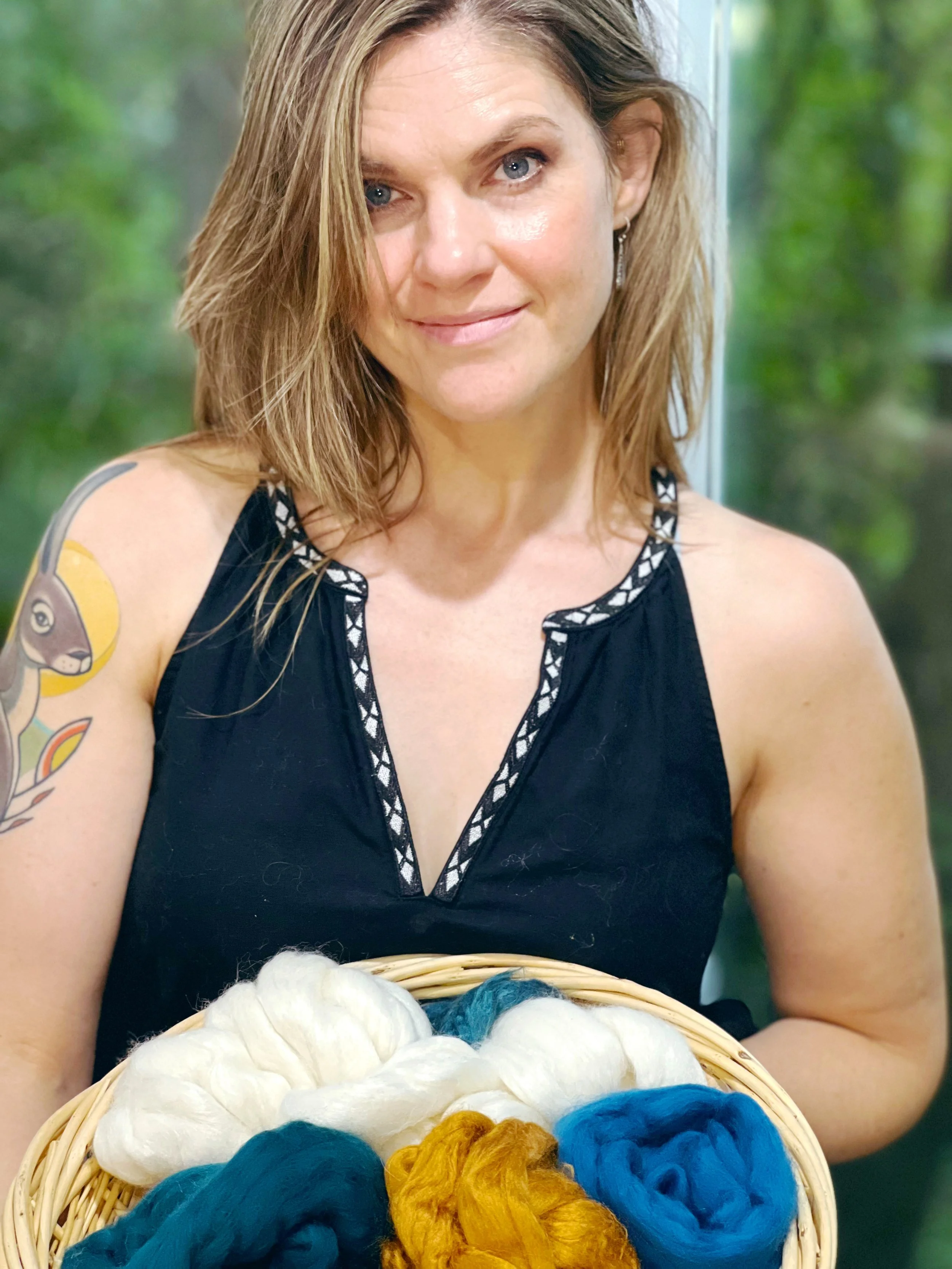
Megan Henderson Spotlight
Megan Henderson
Written by Nor Osborne, July 2025
How often have you referred to the telling of a tale as the spinning of a story? Talked about connections as the weaving of a thread? What about tying up loose ends? Hanging by a thread? Being cut from the same cloth? Spinning a yarn?
The language of fiber arts is deeply embedded into our language, representing just how quintessential fiber arts have been to our culture throughout history.
That's what Granville based textile artist Megan Henderson believes.
“The fiber arts in general have such a long, deep history. Wool itself has been so important to all of civilization,” Megan says.
Megan embraces this ancient artistry, bringing a 21st century spin on the art form that modern culture has seemed to forget. She primarily focuses on felting, excelling at wet felting, needle felting, and other multi media techniques on pre-made fabrics, to bring her fiber based visions to life.
Megan creates in collections, crafting a set of wool paintings that follow a specific theme. Each collection is a deep dive of a particular set of symbols found throughout historical storytelling, mythology, and folklore.
Currently, Megan is focusing on snake imagery, exploring how the snake has been linked with women and goddesses in stories, often riddled with negative connotations. These felted creations investigate characters such as Eve and Medusa, among a plethora of other fairy tales from a wide range of cultures.
“What interests me the most is the fact that fiber arts throughout history have been considered as women's work, designating spinning and weaving to them. It wasn’t just taught to them, but expected of them.”
“That's actually where the term spinster comes from,” Megan notes. “A woman who was so good at spinning that she was able to financially support herself and her family, breaking out of the societal norms at the time. The term originally wasn’t derogatory at all, but of course, that's what it became.”
“Women, for such a long term, were barred from the world of artistic expression, not allowed to learn how to paint, or read or write for that matter. They wanted to keep women out of those areas, and yet the area they were expected to be apart of, fiber arts, was such an important part of civilization”
Long before she ever touched a strand of wool, Megan studied art at Allegheny College, primarily focusing on figure drawing.
“I was not interested in fiber arts at all in college. I remember choosing classes and concentrations and thinking, very ironically, ‘that’s boring, I don’t want to do that.’”
She ended up leaving school after finishing her junior year. She chose to start a family, getting married and having kids. This led her to a career in childbirth education, where she worked as a doula for a long time. Megan may have stopped studying art, but she still found ways to keep art in her life.
“As it often does, art found a way back into my life. I was able to weave art into what I was doing,” Megan says. “It may not have been in the forefront of what I was doing, but it was always there in the background.”
Megan utilized her talents, casting the stomachs of her pregnant clients to artistically celebrate their pregnancies.
Being a birth worker was ultimately what propelled Megan into the fiber arts world. Many of the midwives she worked with were avid knitters, peaking her interest.
“Being surrounded by knitters, I decided to learn how to knit myself. That was kind of like the gateway craft into learning about felting.”
Fascinated by the felting work she had seen, Megan set out to master the art.
“I found a woman who was local to teach me more about the form. At the time, there wasn’t much information online about the craft, so it was a lot of trial and error. I’ve gone between teaching myself and taking courses with other fiber artists.”
Felting has provided Megan with a way to connect in new and meaningful ways, with history as well as those around her.
“Art makes life more engaging and enriching, giving people a nonverbal way to tap into their emotions. It's a way to connect with people on a new level, stirring something within them. You’re engaging a totally different part of your brain when you connect with art.”
Megan hopes that as we move forward as a society, everyone will continue to have access to all forms of art.
“So often we see that funding for the arts is the first to be cut. I don’t hold out a whole lot of hope in this political climate that that pattern won’t continue,” Megan says. “Having access to all forms of art is so incredibly important. We do a disservice to ourselves, and especially our kids, our future, when we don’t let ourselves express that.”



